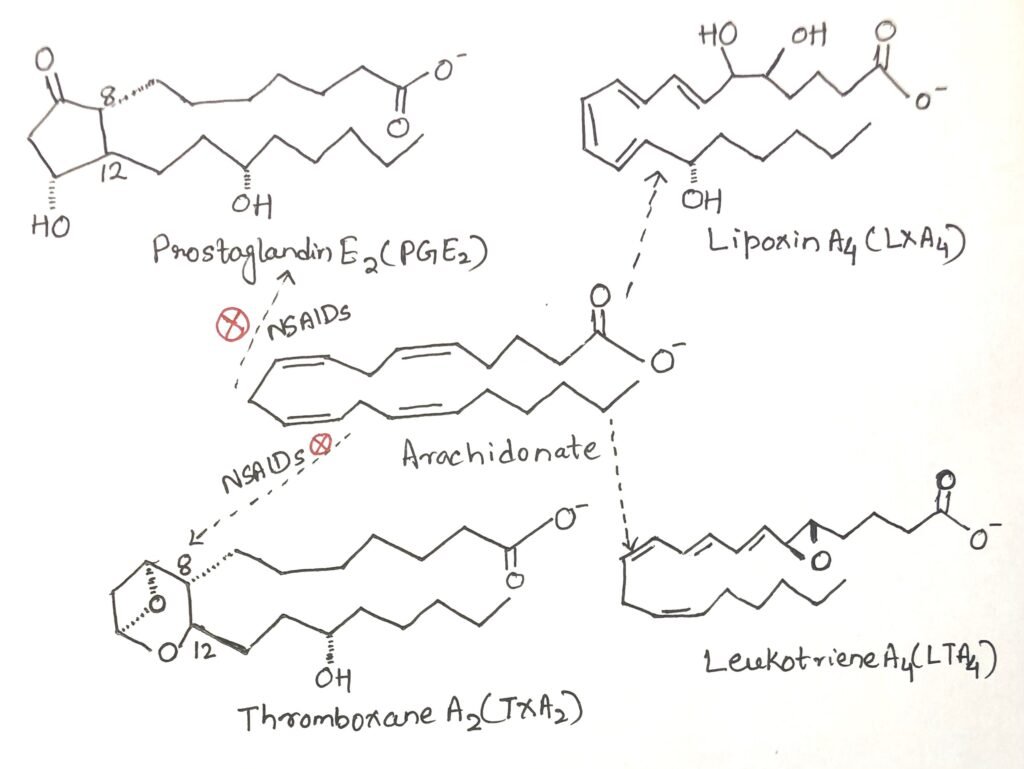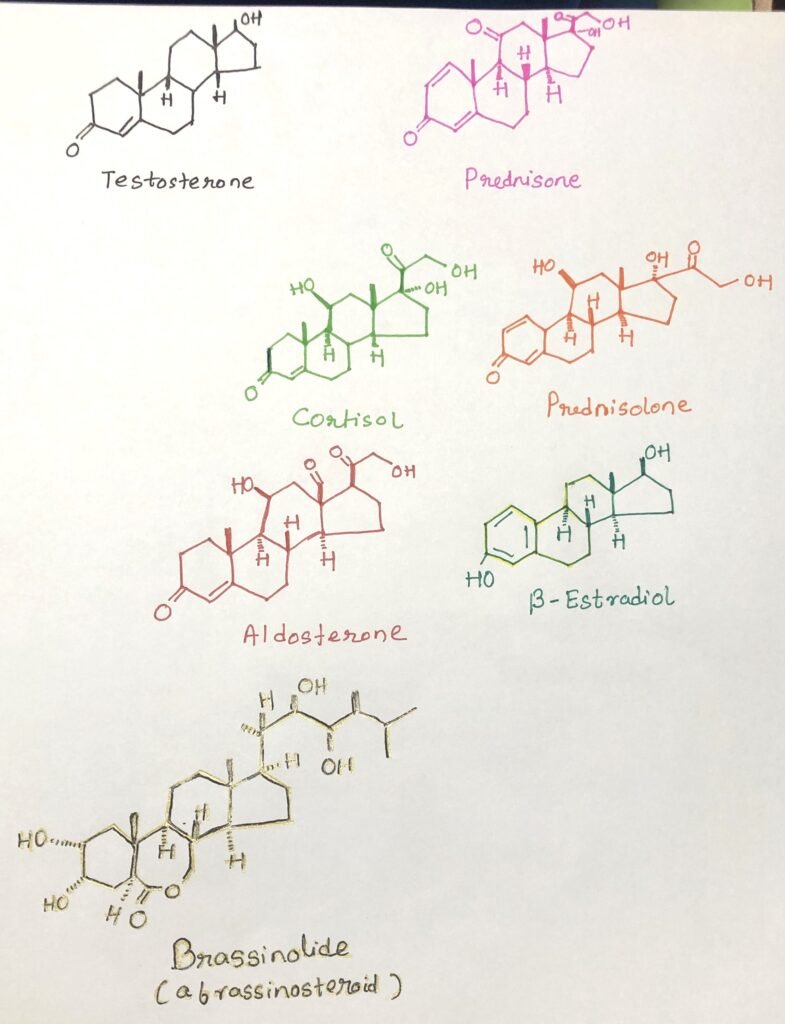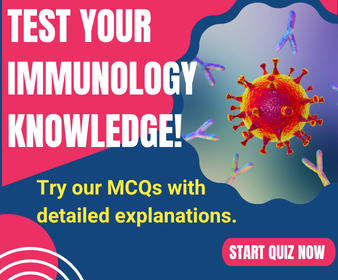In this article, I briefly describe the types of eicosanoids and steroid hormones and how they carry messages to cells and tissues, respectively.
Eicosanoids
Eicosanoids are bioactive lipid molecules derived from 20-carbon polyunsaturated fatty acids, mainly arachidonic acid. They play vital roles in cell signaling, especially in inflammation, immunity, and many physiological functions. These are paracrine hormones that act locally, affecting only nearby cells at the site of their synthesis. Eicosanoids are not transported through the bloodstream to distant tissues or organs. These molecules play crucial roles in reproductive processes and are key mediators of inflammation, fever, and pain from injury or disease. Additionally, they help regulate blood pressure, control gastric acid secretion, and participate in various other processes essential to human health and disease management. Eicosanoids are derived from arachidonate and eicosapentaenoic acid. The four major classes of eicosanoids are prostaglandins, thromboxanes, leukotrienes, and lipoxins.
Prostaglandins
The prostaglandins are a group of hormones named after the prostate gland, where they were first discovered by scientists Bengt Samuelsson and Sune Bergström. These compounds are synthesized from fatty acids—specifically, series 2 prostaglandins like PGE₂ originate from arachidonic acid, while series 3 prostaglandins are derived from eicosapentaenoic acid (EPA). Prostaglandins play diverse roles in the body. Some induce uterine contractions during menstruation and labor, whereas others regulate blood flow to certain organs, influence the sleep-wake cycle, and modulate tissue responses to hormones such as epinephrine and glucagon. A particular group of prostaglandins is also responsible for raising body temperature and triggering inflammation and pain.
Thromboxanes
Thromboxanes are produced by platelets and play a key role in blood clot formation. They help restrict blood flow to the clot site and are characterized by a six-membered ring with an ether group. Research by John Vane revealed that nonsteroidal anti-inflammatory drugs (NSAIDs) such as aspirin, ibuprofen, and meclofenamate work by inhibiting the enzyme prostaglandin H₂ synthase (Figure 1). This enzyme is involved in an early stage of converting arachidonic acid into series 2 prostaglandins and thromboxanes. In the figure, it can be seen that in prostaglandin E2, C-8 and C-12 of arachidonate are joined to form the characteristic five-membered ring. In thromboxane A2, the C-8 and C-12 are joined, and an oxygen atom is added to form the six-membered ring.

Leukotrienes
First found in leukocytes, leukotrienes are compounds characterized by three conjugated double bonds (Figure 1). Leukotriene D4, which is produced from leukotriene A4, triggers the contraction of smooth muscle in the airways of the lungs. When leukotrienes are overproduced, they can lead to asthma attacks. Medications like prednisone, used to treat asthma, work by inhibiting the synthesis of leukotrienes. During anaphylactic shock—a severe and potentially life-threatening allergic reaction to substances like bee venom, penicillin, or other allergens—a pronounced contraction of the lungs’ smooth muscle is a key symptom.
Lipoxins
These compounds are linear eicosanoids, characterized by multiple hydroxyl groups along their carbon chain (Figure 1). They act as powerful anti-inflammatory agents. Since their production is enhanced by the regular intake of low-dose aspirin, such doses are often recommended for people with cardiovascular conditions.
Steroid Hormones: The Chemical Messengers Between Tissues
Sterols undergo oxidation to form steroids. While steroids retain the sterol core structure, they lack the alkyl side chain found on ring D of cholesterol, making them more polar than cholesterol. Once produced, steroid hormones travel through the bloodstream to reach their target tissues. Upon arrival, they enter the target cells and bind to specific receptor proteins located in the nucleus. This binding initiates changes in gene expression and cellular metabolism.
Because hormones have a high affinity for their receptors, only very small amounts are needed to elicit biological responses in target tissues. The main categories of steroid hormones include sex hormones, testosterone and estradiol (both male and female), and adrenal cortex hormones like cortisol and aldosterone (Figure 2). Aldosterone and cortisol regulate salt excretion and glucose metabolism, respectively. Prednisone and prednisolone are synthetic steroid drugs known for their potent anti-inflammatory effects. These effects are partly due to their ability to block phospholipase A2, reducing arachidonate release and thereby suppressing the production of inflammatory molecules, such as prostaglandins, thromboxanes, leukotrienes, and lipoxins. These medications are widely used to treat conditions like asthma and rheumatoid arthritis.

Brassinolide: A Steroidlike Growth Messenger in Plants
Vascular plants produce brassinolide (Figure 2), a steroidlike compound that acts as a powerful growth regulator. It promotes stem elongation and influences the alignment of cellulose microfibrils in the cell wall during plant growth.
Conclusion
Eicosanoids are bioactive lipid molecules derived from 20-carbon polyunsaturated fatty acids, mainly arachidonic acid. They play vital roles in cell signaling, especially in inflammation, immunity, and many physiological functions. These are paracrine hormones that act locally, affecting only nearby cells at the site of their synthesis. The four major classes of eicosanoids are prostaglandins, thromboxanes, leukotrienes, and lipoxins.
Prostaglandins are synthesized from fatty acids—specifically, series 2 prostaglandins like PGE₂ originate from arachidonic acid, while series 3 prostaglandins are derived from eicosapentaenoic acid (EPA). Prostaglandins play diverse roles in the body.
Thromboxanes are produced by platelets and play a key role in blood clot formation. They help restrict blood flow to the site of a clot and are characterized by a six-membered ring with an ether group.
Leukotrienes, first discovered in leukocytes, are molecules distinguished by three conjugated double bonds. Leukotriene D4, a derivative of leukotriene A4, induces the contraction of smooth muscles in the lung airways. Excessive production of leukotrienes can result in asthma attacks. Lipoxins are linear eicosanoids featuring several hydroxyl groups along their carbon chain. They function as potent anti-inflammatory agents.
Steroid hormones include sex hormones and adrenal cortex hormones like cortisol and aldosterone. Aldosterone regulates salt balance, while cortisol controls glucose metabolism. Synthetic steroids such as prednisone and prednisolone reduce inflammation by blocking phospholipase A2. Thus, limiting arachidonate release and the formation of inflammatory molecules. Vascular plants produce brassinolide, a steroidlike compound that acts as a powerful growth regulator.

I, Swagatika Sahu (author of this website), have done my master’s in Biotechnology. I have around fourteen years of experience in writing and believe that writing is a great way to share knowledge. I hope the articles on the website will help users in enhancing their intellect in Biotechnology.




